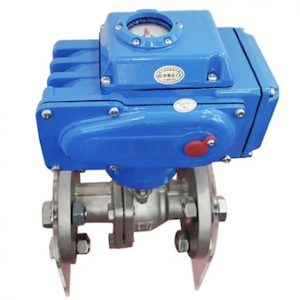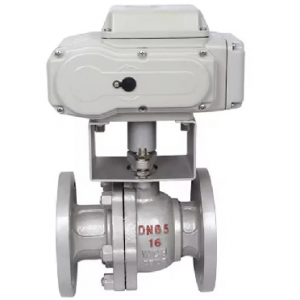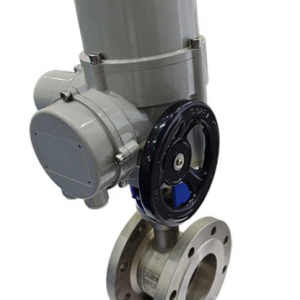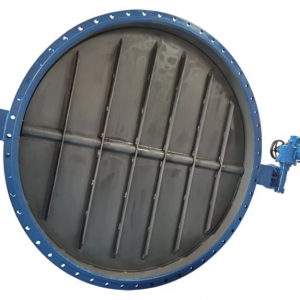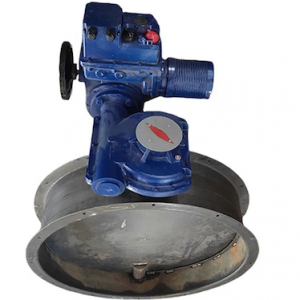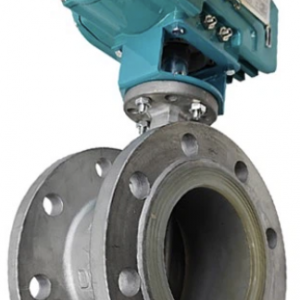Description
The ASTM WCB A216 Motor Drive Regulator Ball Valve is a sphere with a circular channel, which rotates around an axis perpendicular to the channel. The ball rotates with the valve stem to achieve the purpose of opening and closing the channel. The ball valve only needs to be rotated 90 degrees and a small rotational torque to close tightly. According to the needs of working conditions, different driving devices can be assembled to form ball valves with various control methods, such as electric ball valves, pneumatic ball valves, hydraulic ball valves, etc. When the ball valve rotates 90 degrees, all spherical surfaces should be present at the inlet and outlet. Thereby closing the valve and cutting off the flow of the medium.
Advantages
Corrosion resistant
Made of 304/316 stainless steel, combined with nickel and chromium elements, corrosion-resistant;
Not easy to rust
Made of 304/316 stainless steel, strong oxidation resistance and not easy to rust
Strong versatility
T-type/L-type tee, the threads are common with ordinary pipes, easy to replace and install;
Good sealing performance
PTFE PTFE valve seat seal has good sealing performance and temperature resistance up to 120°C;
Exquisite appearance
The natural color of stainless steel, exquisite structure, exquisite and beautiful appearance.
Overview
The ball valve evolved from a cock. Its opening and closing part is a sphere. The ball is used to rotate 90° around the axis of the valve stem to open and close. Ball valves are mainly used on pipelines to cut off, distribute and change the flow direction of media. Ball valves designed with V-shaped openings also have good flow regulation functions. The ball valve not only has a simple structure but also has good sealing performance. Moreover, within a certain nominal size range, it is small in size, light in weight, consumes less material, has a small installation size, has a small driving torque, is easy to operate, and can easily open and close quickly. It is one of the valve types that has developed rapidly in the past ten years. . Especially in industrially developed countries such as the United States, Japan, Germany, France, Italy, Spain, and the United Kingdom, ball valves are widely used, and the varieties and quantities used continue to expand, and are moving towards high temperature, high pressure, large diameter, high sealing, and long-term use. With its long life, excellent regulating performance and multi-function in one valve, its reliability and other performance indicators have reached a high level, and it has partially replaced gate valves, globe valves and throttle valves. With the technological advancement of ball valves, they will be more widely used in the foreseeable short term, especially in oil and gas pipelines, refinery cracking units and the nuclear industry. In addition, ball valves will also become one of the leading valve types in large and medium diameter, medium and low pressure fields in other industries. The advantages of ball valves are:
1) Has the lowest flow resistance (actually only equivalent to a section of circular pipe of the same nominal size).
2) Because it will not get stuck during operation (when there is no lubricant), it can be reliably used in corrosive media and low-boiling point liquids.
3) Complete sealing can be achieved within a larger pressure and temperature range.
4) Quick opening and closing can be achieved. The opening and closing time of some structures is only 0.05-0.1s to ensure that it can be used in the automation system of the test bench. When the valve is opened and closed quickly, the operation will be impact-free.
5) The spherical closing piece can be automatically positioned at the boundary position.
Product Quality Inspection Before Leaving The Factory
1. Inspect the products produced on the electric actuator production line every day, 100% inspection. First, open the indicator cover and check whether the wiring is beautiful, whether the limit cams in the opening and closing directions are fully raised, and whether the pointer position is consistent with the actual position of the actuator. , whether the screws inside are tightened, check whether the back cover is correct, and check whether there is paint peeling on the appearance of the electric actuator. Dirt, manual wrench, waterproof connector, manual dust plug, sight glass, and sight glass gland are all installed. After everything is correct, use a laser marking machine to mark the product number on the back of the electric actuator. The product number should include the date of the day, and finally put the foam into storage.
2. Inspection of complete sets of valves: After the valve installation production line operator completes the debugging, he will take the production order to the quality inspector, and the quality inspector will check the production order and products one by one (inspection items: valve quantity, diameter, material, connection method. Whether the pressure is consistent with the production order, whether the voltage, control type, connection method of the electric actuator, whether it is an explosion-proof product, and whether it is consistent with the production order, whether the screws of the valve and electric actuator are tightened, whether there are any missing ones)
3. Inspection before packing: Check whether the product quantity, model, voltage, control method, and spare parts are consistent with the production order.
4. Inspection of random inspection products in the processing center: Once in the morning and afternoon every day, take the inspection item list to the processing center and randomly select a processed product from each machine. Find the processing center operator and ask him to measure one by one according to the inspection item list. , and keep records.
Floating Ball Valve
Features
◆ The actuator connection adopts ISO5211 international standard
◆ Full-bore structure and locking device design
◆ Strong flow capacity, small flow resistance, two-way sealing
◆ Valve stem anti-fly-out structure, fireproof and anti-static design
Overview application
◆The ball of floating ball valve has no supporting shaft and is held by the valve seat in a "floating" state; it is widely used in petroleum, chemical, natural gas, electric power, metallurgy and other industries for cutting off or a small amount of adjustment.
Technical Parameters
◆Nominal diameter: DN15~DN200 (1/2"~8")
◆Pressure level: PN16-PN100 (class150~600)
◆Operating temperature: -40C~450℃
◆Connection method: flange, thread, welding
◆Sealing form: soft seal, metal seal
Main material
◆Valve body: carbon steel, stainless steel, alloy steel, duplex steel, etc.
◆Valve core: stainless steel, duplex steel, etc.
◆Valve seat; soft seal; PTFE, R-PTFE, PPL, PEEK
◆Metal seal spraying: STL, WC, Ni60, Cr3C2, etc.
Trunnion Ball Valve
Features
Fireproof design with anti-static device · Full-bore design, strong flow capacity and small flow resistance · The valve cavity automatically releases pressure and has good safety protection performance. ·A variety of structural forms to choose from
Overview application
The fixed ball valve adopts a fixed ball structure and does not move after being pressurized: it can be adapted to high pressure and large diameter situations, and can use a full-bore or reduced-bore structure as needed. Widely used in petroleum, chemical, natural gas, electric power, metallurgy, food and other industries.
Technical Parameters
Nominal diameter: DN50~DN1200 (2"-48") Pressure level: PN16~PN420 (class150~2500) Working temperature:-40°C~450°C Connection method: flange, welding Sealing form: soft seal, metal seal
Main material
Valve body: carbon steel, stainless steel, alloy steel, duplex steel, etc. Valve core: stainless steel, duplex steel, etc. Valve seat: Soft seal: PTFE, R-PTFE, PPL, PEEK Metal seal spraying: STL, WC, Ni60, Cr3C2, etc.

